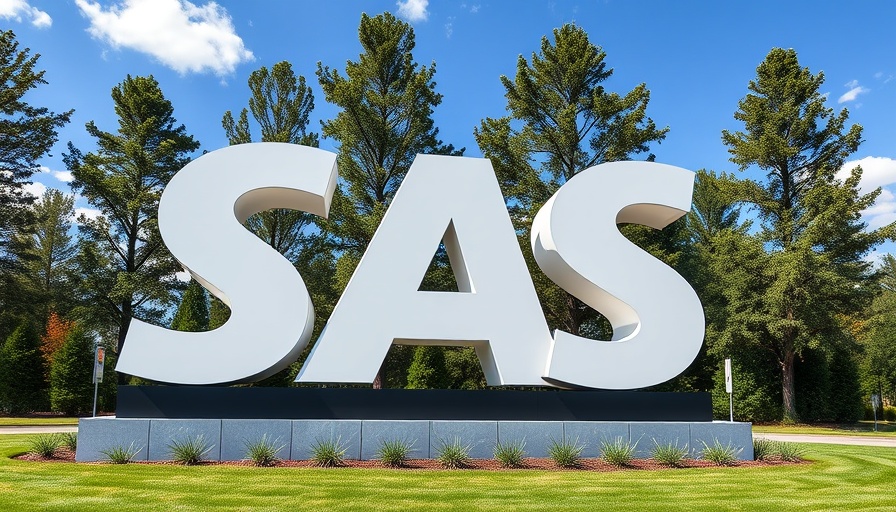
Celebrating a Milestone: The 25th SAS Championship
The 25th SAS Championship serves not only as a platform for elite golfers but as a powerful showcase of community and technology. While the greens echoed with cheers of accomplished athletes, the true highlight was a week filled with events that connected innovation with opportunity almost seamlessly. This year, the HBCU Invitational and career day provided a unique opportunity for student-athletes from Historically Black Colleges and Universities to network and learn about future careers in technology.
The HBCU Invitational: Bridging Golf and Technology
This year marked the fourth annual HBCU Invitational where young minds gathered to compete, interact, and explore their future. Reggie Townsend, Vice President of SAS, ignited the event by emphasizing the importance of curiosity and connection among students. He encouraged attendees to leverage this unique chance to create lasting relationships beyond the course.
With insights from leaders at LinkedIn and Microsoft, attendees delved into crafting a robust digital presence and preparing for future careers influenced by artificial intelligence. The tournament concluded with North Carolina A&T securing wins in various categories, showcasing the prowess of these young athletes.
Honoring Service: Folds of Honor Collaboration
In a heartfelt tribute, the SAS Championship extended its reach beyond sports to honor veterans through its partnership with Folds of Honor. A ceremonial opening, featuring JROTC from Cary High School and veterans sharing personal stories, conveyed powerful messages of remembrance and service. Pat Gallagher from SAS shared a poignant moment being 'coined'—a symbol of recognition and gratitude, highlighting how the championship aligns values of honor and education through awarded scholarships for families of wounded or fallen heroes.
Community Engagement: Fairway to Fun
Aiming to enhance community ties, the Fairway to Fun event delighted attendees with hands-on tech experiences and local cuisine. This wasn't just a festive gathering, but a celebration of creativity and connection with a mission. The YMCA of the Triangle partnered with SAS to promote STEM education, engaging youth in inspiring activities linking technology and personal growth. Events like these emphasize how the SAS Championship doubles as a significant community outreach and development platform.
The Final Competition: Alex Čejka's Remarkable Victory
On the greens, Alex Čejka clinched the title, making history as only the second German golfer to win the SAS Championship. His exceptional performance, scoring 9 under par, was marked not just by athletic prowess but also by the challenging rainy conditions that added an intriguing twist to the final day of competition. Čejka embodies the spirit of perseverance, resonating deeply with current and future generations of both golfers and tech professionals alike.
What's Next: Future Predictions in Golf and Tech
As technology continues to evolve, the intersections with sports like golf offer exciting prospects. The influence of AI is growing—tracking performance, enhancing training, and refining gameplay strategies, reshaping how athletes prepare and compete. This transformation isn't limited to golf; it's a glimpse into a future where AI learning paths are essential for both budding athletes and young professionals.
Such amalgamations highlight the necessity for technology and education initiatives in today’s STEM conversations. Organizations like SAS, by supporting events like the HBCU Invitational, are paving the way for the next generation of diverse technology leaders who will drive innovation forward.
Conclusion: Embracing the Future of Technology
The SAS Championship is much more than a prestigious golf tournament; it’s a community-building endeavor that integrates education, technology, and philanthropy. As the next chapter unfolds, there's an urgent call for continued support for STEM education, creating pathways for youth that embrace the advancing technologies shaping our future.
In light of this vibrant future, continue to engage with opportunities that bridge traditional practices with revolutionary technology. Seek out educational workshops, stay informed about industry developments, and above all, foster connections that propel both your career and community forward.
 Add Row
Add Row  Add
Add 




Write A Comment